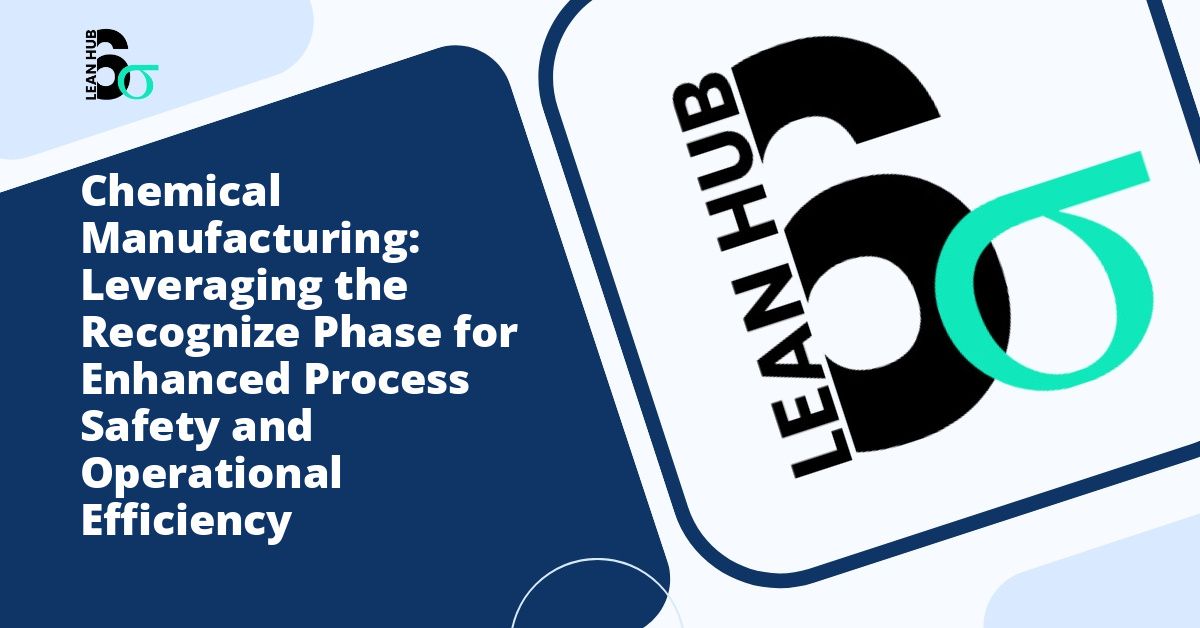The pharmaceutical industry operates under some of the most stringent regulatory requirements of any sector. With patient safety at stake and billions of dollars invested in research and development, pharmaceutical manufacturers cannot afford errors in their production processes. This is where lean six sigma methodologies become invaluable, particularly the often-overlooked recognize phase that sets the foundation for quality improvement initiatives.
Understanding how to properly identify and assess quality issues before they escalate into costly recalls or compliance violations is critical for pharmaceutical companies. The recognize phase serves as the essential first step in any systematic approach to manufacturing excellence, helping organizations maintain the highest standards while meeting regulatory requirements. You might also enjoy reading about Recognize Phase in Call Centers: Identifying Customer Service Gaps with Lean Six Sigma.
Understanding the Recognize Phase in Pharmaceutical Manufacturing
The recognize phase represents the initial stage of problem identification and opportunity assessment in process improvement. While many quality professionals are familiar with the traditional DMAIC (Define, Measure, Analyze, Improve, Control) framework of lean six sigma, the recognize phase actually precedes these steps. It involves acknowledging that a problem exists, understanding its potential impact, and determining whether it warrants a formal improvement project. You might also enjoy reading about Risk Assessment in the Recognize Phase: What Could Go Wrong in Your Lean Six Sigma Project?.
In pharmaceutical manufacturing, this phase takes on heightened importance due to the regulated nature of the industry. A minor deviation that might be acceptable in other sectors could lead to serious consequences in drug production, including compromised patient safety, regulatory sanctions, or product recalls costing millions of dollars. You might also enjoy reading about Lean Six Sigma Recognize Phase in Emergency Departments: Identifying Critical Bottlenecks.
Key Components of the Recognize Phase
Problem Identification and Awareness
The first step in the recognize phase involves creating a culture where problems are identified quickly and transparently. In pharmaceutical manufacturing, this means establishing robust surveillance systems that monitor critical quality attributes throughout the production process. These systems might include:
- Continuous monitoring of environmental conditions in cleanrooms
- Regular analysis of batch records and deviation reports
- Tracking of customer complaints and adverse event reports
- Review of audit findings and regulatory inspection observations
- Analysis of product stability data and out-of-specification results
The goal is to recognize patterns and trends before they result in significant quality events. This proactive approach aligns with current Good Manufacturing Practices (cGMP) requirements and demonstrates a commitment to continuous improvement.
Impact Assessment
Once a potential issue is identified, the next component of the recognize phase involves assessing its impact on product quality, patient safety, and regulatory compliance. Pharmaceutical manufacturers must evaluate several factors:
- Severity of potential patient harm
- Frequency of occurrence
- Detectability of the problem
- Regulatory implications
- Financial impact
- Effect on production capacity
This assessment helps prioritize which issues require immediate attention and which can be addressed through routine improvement activities. The pharmaceutical industry often uses risk management tools such as Failure Mode and Effects Analysis (FMEA) during this evaluation process.
Stakeholder Engagement
Successful recognition of quality issues requires input from multiple stakeholders across the organization. Quality assurance teams, production personnel, regulatory affairs specialists, and senior management all play crucial roles in identifying and validating concerns. Creating channels for open communication ensures that problems are recognized regardless of where they originate in the manufacturing process.
Applying Lean Six Sigma Principles During Recognition
Lean six sigma provides a structured framework for the recognize phase that complements pharmaceutical quality systems. The methodology emphasizes data-driven decision making, which is essential for identifying genuine quality issues versus normal process variation.
Data Collection and Analysis
During the recognize phase, pharmaceutical manufacturers collect data from various sources to validate suspected problems. This might include statistical process control charts, capability studies, trend analysis, and correlation studies. The lean six sigma approach ensures that decisions are based on objective evidence rather than assumptions or anecdotal observations.
For example, if a manufacturing site notices an increase in tablet weight variation, the recognize phase would involve gathering data to confirm whether this represents a statistically significant shift or merely random variation within acceptable limits. This prevents unnecessary investigations while ensuring real problems are not dismissed.
Voice of the Customer
In pharmaceutical manufacturing, the “customer” encompasses patients, healthcare providers, regulators, and internal stakeholders. The recognize phase must consider feedback from all these groups. Patient complaints, prescriber concerns, and regulatory guidance documents all provide valuable insights into potential quality issues that may not be immediately apparent from manufacturing data alone.
Common Quality Issues Identified During the Recognize Phase
Pharmaceutical manufacturers typically encounter several recurring categories of quality issues during the recognize phase:
Process Variability
Inconsistencies in raw materials, equipment performance, or environmental conditions can lead to product variability. Recognizing these patterns early allows manufacturers to implement controls before products fail specifications or exhibit reduced stability.
Procedural Gaps
Discrepancies between written procedures and actual practice often emerge during the recognize phase. These gaps can lead to compliance issues during regulatory inspections and may compromise product quality if critical steps are not properly controlled.
Equipment Reliability
Aging equipment, inadequate maintenance, or inappropriate operating parameters can affect product quality. The recognize phase helps identify equipment-related issues before they result in batch failures or contamination events.
Human Error Patterns
Recurring human errors often indicate systemic issues such as inadequate training, poorly designed processes, or excessive workload. Recognizing these patterns allows organizations to implement effective corrective actions rather than simply retraining individuals.
Integrating the Recognize Phase with Regulatory Requirements
The recognize phase aligns naturally with regulatory expectations for pharmaceutical quality systems. The FDA’s process validation guidance and ICH Q10 (Pharmaceutical Quality System) both emphasize the importance of continual improvement and proactive problem identification.
By formally incorporating the recognize phase into their quality systems, pharmaceutical manufacturers can demonstrate to regulators that they have robust mechanisms for identifying and addressing quality issues. This proactive approach is increasingly valued by regulatory agencies, which have shifted focus from retrospective review to real-time quality assurance.
Best Practices for Implementing the Recognize Phase
To maximize the effectiveness of the recognize phase in pharmaceutical manufacturing, organizations should consider these best practices:
- Establish clear criteria for what constitutes a potential quality issue worthy of investigation
- Create user-friendly systems for reporting concerns without fear of retribution
- Provide training on lean six sigma principles to help staff recognize improvement opportunities
- Implement regular management reviews of quality metrics and trends
- Use visual management tools to make quality issues visible across the organization
- Develop standardized templates for documenting recognized issues and their initial assessment
- Ensure adequate resources are allocated to investigate and address identified concerns
Measuring Success in the Recognize Phase
Organizations can track several metrics to evaluate the effectiveness of their recognize phase activities:
- Time from problem occurrence to formal recognition
- Percentage of issues identified through proactive monitoring versus reactive discovery
- Number of quality issues prevented through early recognition
- Reduction in customer complaints and regulatory observations
- Employee participation in problem identification
These metrics help organizations refine their approach and ensure that the recognize phase is contributing to overall quality improvement.
Conclusion
The recognize phase serves as the critical foundation for quality excellence in pharmaceutical manufacturing. By systematically identifying potential issues before they escalate, organizations can protect patient safety, maintain regulatory compliance, and avoid costly quality failures. When combined with lean six sigma methodologies, the recognize phase becomes a powerful tool for continuous improvement that aligns with both business objectives and regulatory expectations.
Pharmaceutical manufacturers who invest in strengthening their recognize phase capabilities position themselves for long-term success in an increasingly competitive and regulated industry. The ability to proactively identify and address quality concerns demonstrates maturity in quality culture and commitment to delivering safe, effective medications to patients worldwide.








